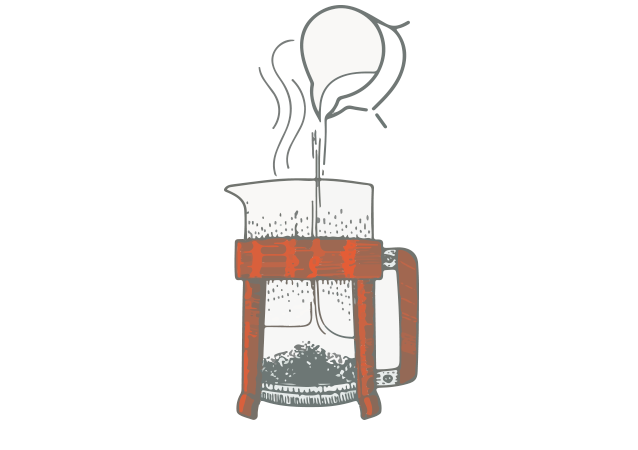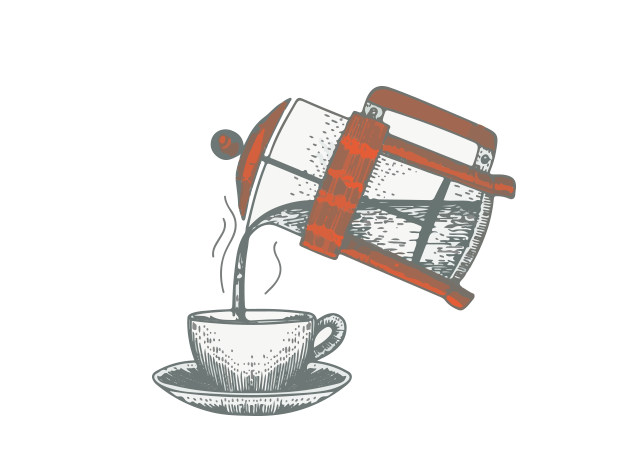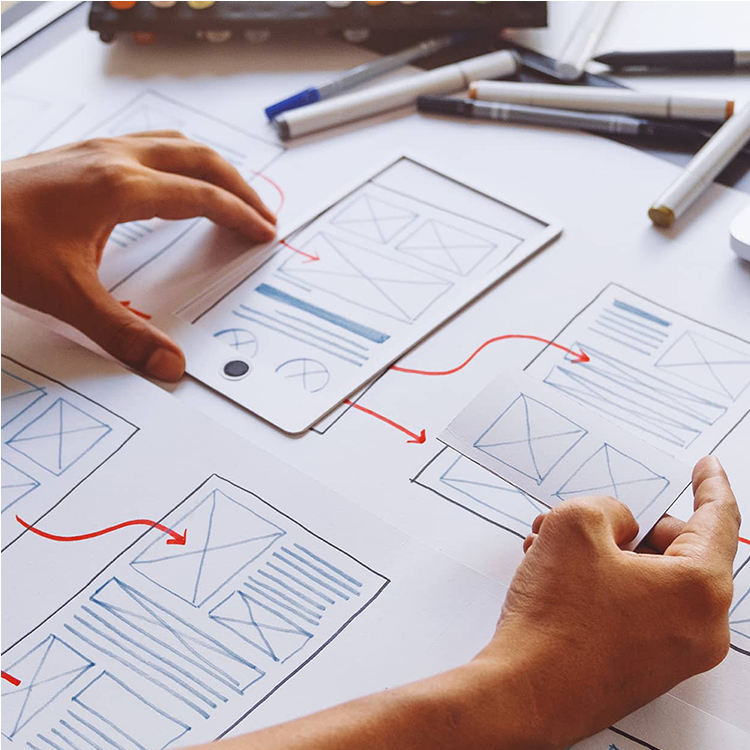Creating a successful custom web design involves a lot more than simply choosing attractive colours and graphics. It’s a comprehensive process that takes into account both aesthetics and functionality.
A unique visual web design allows your business to stand above competitors by carving out a distinct digital identity. In today's saturated online landscape, originality is the key to memorable web experiences, which translate into brand recognition and customer loyalty.
In a sea of similar-looking websites, a custom web design offers a competitive edge that can set your business apart. The visual elements of your website - from the colour palette, typography, and page layout, to the images and interactive features - work together to create a digital aesthetic that communicates your brand's personality and values.
At 306 Technologies, we've built custom websites for businesses of all sizes and industries, showcasing our unmatched versatility and adaptability. From fledgling startups to established corporations, across sectors as diverse as retail, healthcare, education, and technology.
Our unique website design process revolves around the client. It's a methodical and thorough procedure that takes into account your specific needs, objectives, and the unique dynamics of your industry.
In this guide, we'll walk you through the step-by-step process employed by 306 Technologies to create impactful, user-friendly websites optimized for search engines.

Step 1: Planning Your Custom Web Design
Every successful project begins with a well-defined plan. The planning stage of the web design process involves defining your website's primary goal, identifying your target audience, and establishing your desired action from site's users.
Envisioning what success looks like for your company is also a critical part of the planning stage. This doesn't simply mean visualizing a beautifully designed website; it's about envisioning how this website will impact your business positively. Imagine the ideal interaction a visitor will have on your site. Would they read your blog, sign up for a newsletter, make a purchase, or contact you for more information? Will they find what they're looking for quickly and easily? How will they feel about your brand after visiting your site?
Success could also be about numbers. Consider the metrics that matter most to your business. It could be the number of visitors, the duration of their visit, the pages they view, or the actions they take. Maybe it's the sales you make, the leads you generate, or the customer reviews you gather.
Once you have a clear vision of success, set quantifiable objectives and key performance indicators (KPIs) to track your progress towards this vision. These could include targets for traffic, conversion rates, sales, or any other metric that aligns with your business goals.
Remember, your website should not only look good but also serve a purpose.
It's during the planning phase that you define this purpose and outline the path to achieving it. It's a critical step that sets the tone for the design and development process, ensuring that the final product aligns with your business objectives and provides real value to your site's users.

Step 2: Information Architecture & Site Design
The next step in the custom web design process is to create your website's information architecture and layout.
Information architecture details how the web pages and features of your site will interact with each other. It involves defining the website's features, structure and any advanced functionality. It is essentially the blueprint of your website.
At 306 Technologies, our professional web developers utilize site architecture to organize your web page in a way that aligns with your users' expectations, making your site intuitive and easy to navigate.
During this phase, you'll also decide on the visual elements of your website, including colour palette, typography, and images.
We encourage our clients to use their own images whenever possible, not just to avoid copyright issues but more importantly, to foster authenticity. Authentic, high-quality images that are unique to your business can significantly enrich your site's visual appeal, while simultaneously boosting your brand's credibility.
This phase is a critical step towards creating a distinctive, custom website that not only looks good, but is also easy to navigate, effectively communicates your brand message, and aligns perfectly with your goals.

Step 3: Design Phase
Once the site's structure and content elements are well-defined, it's time to start the design phase. This is where the magic happens and where expert web designers get to showcase their skills.
In this phase, professional web designers will bring the site to life by incorporating the visual elements discussed earlier. The goal is a design solution that not only looks great but also supports the website's primary aim and appeals to your target audience.
At 306 Technologies, our philosophy is built on great design with form and function, ensuring a balance between an aesthetically pleasing look and an intuitive user interface.
Throughout the design phase, an iterative, collaborative process is crucial. Starting with wireframes and mock-ups, a visual representation of the website layout is created. This gives the client an opportunity to see how the different elements and features of the website will fit together.
Overall, this step in the custom design and development process is essential to create an impactful and effective custom website.

Step 4: Development Process
The development phase marks the evolution of your website from a conceptual design into a fully functioning digital platform. This stage is the technical heart of the project, where our web developers translate the approved design into a live, interactive experience for your users.
In the context of custom web design, the development process requires a mix of various programming languages, depending on the specific needs of your website. Commonly used languages include HTML for structure, CSS for design, and JavaScript for functionality, amongst others.
Key to the development process is functionality. Depending on your website's purpose, this might encompass a variety of features that add functionality, from simple contact forms and live chat plugins to more advanced functionality like eCommerce capabilities or integration with external databases. Regardless of complexity, each feature must be meticulously tested to ensure it works seamlessly and contributes to a smooth user experience.
The digital world is increasingly mobile, and your website should be too. During development, ensuring that your site is responsive and mobile-friendly is key. This means that no matter how users access your website - whether from a desktop computer, a tablet, or a smartphone - they're guaranteed a user-friendly experience.
Site performance is another critical aspect of web development. It's important to strive for efficiency to ensure that every web page on your site loads quickly, keeping your users engaged and the search engines happy. This involves various techniques like optimizing images, minifying code, and leveraging browser caching.
In a nutshell, the development process is a complex, yet exciting phase where the website takes form and begins to develop and function as a complete, cohesive unit, bringing together all the elements of your vision into a fully operational platform.

Step 5: Testing and Launch
Before your website goes live, it's vital to test everything. This includes checking for broken links, testing the site's performance and functionality, and ensuring the site looks good on all device types and browsers. Google Analytics can be integrated into your site to help track performance and visitor behaviour.
Once everything is working as expected, the site can be moved to a live server for the world to see. This is another critical step in the web development process. Going live without proper testing can result in a poor user experience and impact your website's credibility.

Step 6: Ongoing Maintenance and Search Engine Optimization
The conclusion of the website design process doesn't signal an end, but rather a transition into a new phase - Ongoing Maintenance and Search Engine Optimization. Maintaining a dynamic, responsive, and up-to-date website is critical for its continued success. This maintenance phase encapsulates several crucial aspects such as updating content, rectifying any broken links, and making iterative enhancements based on user feedback and behaviour.
Content is the lifeblood of your website. It's what attracts and engages users, and convinces them to take desired actions. To keep your website vibrant and relevant, regular content updates are necessary. These updates can take many forms, from blog posts and news articles to new product listings and updated service offerings. Fresh content not only keeps your audience engaged but also sends positive signals to search engines about your site's relevancy and dynamism.
Just as roads need to be free of obstacles for smooth transportation, your website links must be free of errors for seamless navigation. Over time, some of your website links may become obsolete or broken, creating roadblocks in the user journey and potentially harming your site's reputation with search engines. Part of maintenance involves periodically checking for and fixing any broken links to ensure a smooth and unobstructed user experience.
User feedback is an invaluable resource for continual website improvement. Your users directly interact with your site and therefore provide unique insights into its strengths and areas for improvement. Be it through analytics, surveys, or direct feedback, learning from your users can guide you in making informed, user-centric enhancements to your site.
Incorporated into the maintenance phase is the ongoing effort of Search Engine Optimization (SEO). SEO is not a one-time task, but a continuous process. As algorithms change and competition increases, staying visible in search engine results requires regular optimization efforts. Optimizing your site for search engines involves several activities, from keyword optimization and backlink building to improving site speed and mobile optimization.
Lastly, the use of SEO tools is crucial in monitoring your website's performance and uncovering opportunities for improvement. Tools like Google Analytics and Search Console provide valuable insights into your website traffic, user behaviour, and the health of your site. They help you understand what's working well and where there are areas for optimization.
Conclusion
In conclusion, the custom web design process is a detailed, multi-step process that involves a mix of creative and technical tasks. When done correctly, the result is a functional, visually pleasing website that achieves your business goals and resonates with your audience.
Editor's note: The guide has covered the web design process that 306 Technologies employs. Each design and development team may have slight variations in their web design process based on their methodologies and preferences. The ultimate goal, however, remains the same: to create a website that meets the needs of both the business and its customers.
Remember, developing a new website is not a one-time task but an ongoing process. By understanding each step in the design and development process, you'll be better equipped to create a website that performs well, meets your business needs, and provides value to your customers!





